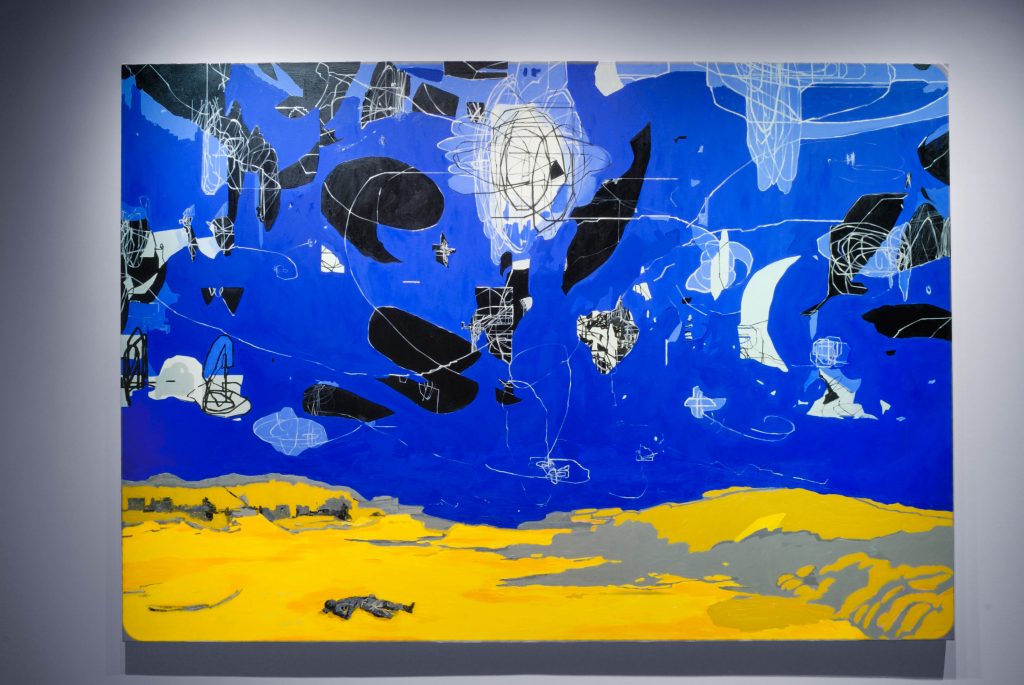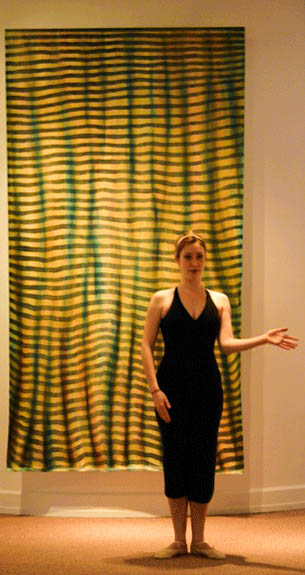Velocity of a Single Gesture, or How to Build an Empire on view spring of 2007.
“In an interview by journalist Ron Suskind, a senior White House adviser is quoted as saying “We’re an empire now, and when we act, we create our own reality.” In the exhibition “The Velocity of Gesture, or How to Build an Empire,” artists are recognized as rulers of their picture planes, creating their “own reality” through personal sensibility and gesture.
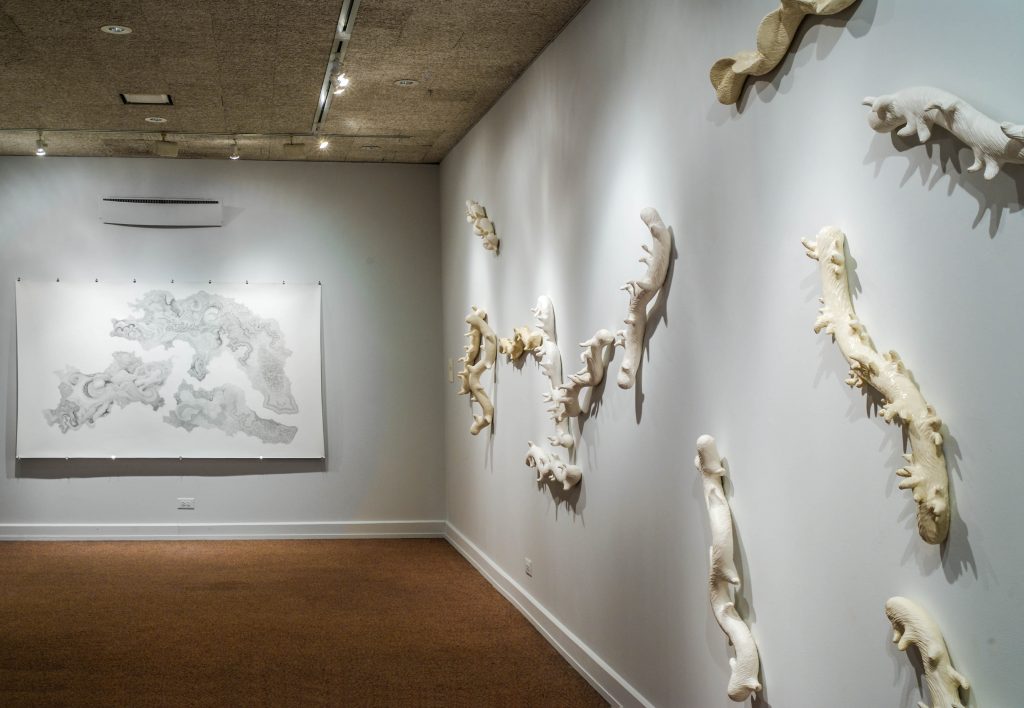
Conducting with a baton, making the sign of the cross, waving a magic wand or saluting a crowd—all are acts in which the drama and tempo of a hand movement have significance. Power lies in the character of the motion, its location in relation to the body and a reading of the culture from which it stems. Communication is nothing without gesture—the lift of an eyebrow, the flick of the hand under the chin. Gesture can become spectacle: the sharp finger cutting quickly horizontally across the neck (one need not even say “off with her head!”); the chilling hail to the führer with arm quickly angled outward, palm flat; Madonna’s hand gripping her crotch. Movement will embody tradition, as with a Flamenco dancer’s snap of the fingers or a circle of women singing, sewing and stitching—needles pushed in/ pulled out, pushed in/pulled out—the rhythms of communal gesture solidifying kinship. Then there is subconscious movement and matters of survival, such as bending away from a hot stove or undesirable suitor.
The artists in the exhibit distill force to its essence, commanding our attention with spectacular movement or quiet seeping and understated subtleties that express a universe through nuance—the whispered vibration of a gesture, an unhinged mark on paper. Grounding can fall away as gravity loses earthbound specifics that we, the viewer, have come to know, as evidenced in the work of Andrea Prince and Teresa Bramlette Reeves. Artists like Avantika Bawa negate actual space by flattening the picture plane to build new dimensions, fabricating unreal depth using various signatures of perspective. Others, like Fereydoon Family, draw changes in space and time by manipulating line and color. Steven Sachs uses only worn, flattened materials—that on which the universe has left an aggressive mark. Personal sensibilities are laid bare; Brent Fogt for instance, draws quiet methodically repetitive lines where others—Albino Mattioli—are vigorous in their approach, breaking the surface with dense slashes so colorful and broad that line becomes shape and shape is planetary. One can try to read artwork like a seismograph, making tangible the artist’s electrical pulse.
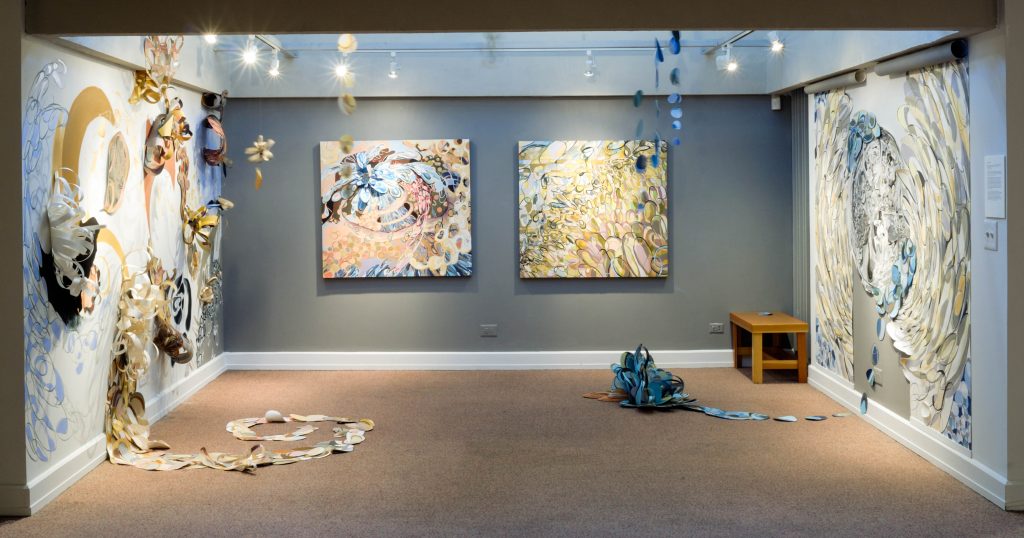
Breaking from known paths as process takes the reins, the artist’s hand/body moves with its own intelligence. Myrtha Vega allows her pen to flow parallel with her scope of vision, seamlessly ‘collage”-ing sites to form cohesive landscapes. Artists like Allan Ludwig and Sid Garrison run headlong up daunting slopes, disappearing around uncharted corners, mapping out subconscious landscapes. They make material the direction and speed of their route, evidence of their journeys. Gregor Turk, in his sculpture series “Limits”—where he fantastically charts boundaries through strange wormy forms—tells of the culture of shifting borders, both literal and imaginary.
These artists are visionaries, making policy for their territories, designing a cosmos from personal truths to find a way of understanding the boundless universe. Alex Kvares scratches into the membrane between public and private worlds of the performer/hermit, stepping open into the spotlight only to crawl back into the cave. Torkwase Dyson considers the bling of hip hop culture, focusing on a nihilistic road paved with wheel spinners and engines with decadent grills, raining teardrops of oil.
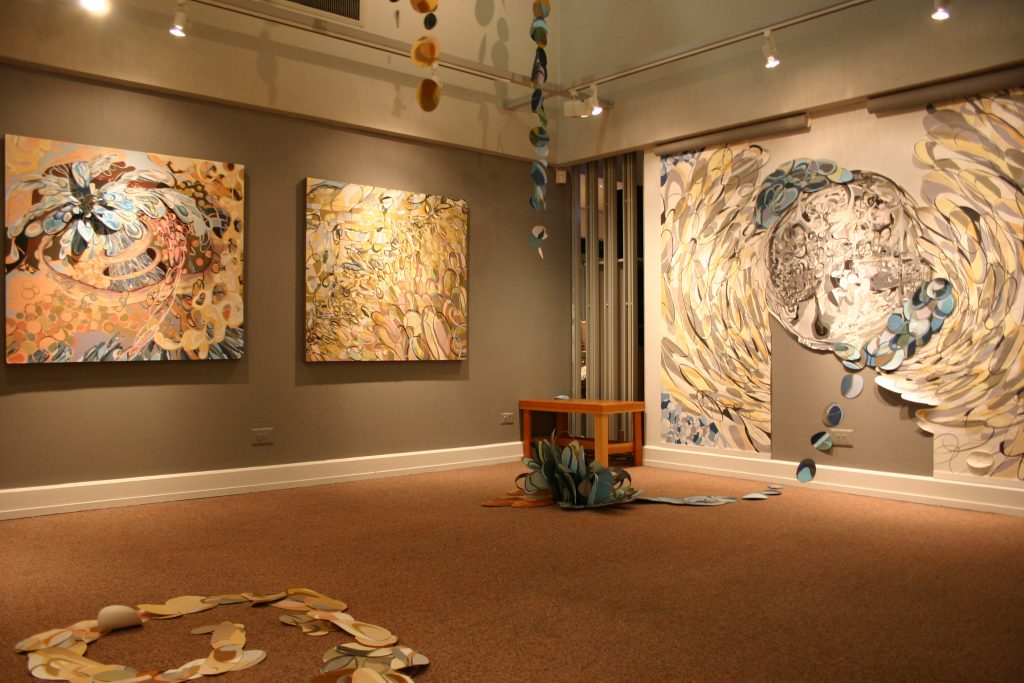
Within such acts of making empires are borne, vibrating with particular momentum and atmosphere, each a soliloquy in its own private universe. These artists gathered under a grandiose title are pushing out from a concrete and bloodied Empire, breaking through layers to pull at a buried reality, coffins hidden from sight. We, the viewer, become archeologists with the hope of digging deeper, visually cutting into the foundation of these new civilizations, studying the webbed fields of electricity and symbolism. Cartographers of interior lands, marking explorations from point A. to point D., these artists bring to the surface unknown worlds and newfound kingdoms tightly drawn with pen, paint, video and clay. What could be more real than that?”
-Lisa Alembik, Dalton Gallery curator 2002-2013


